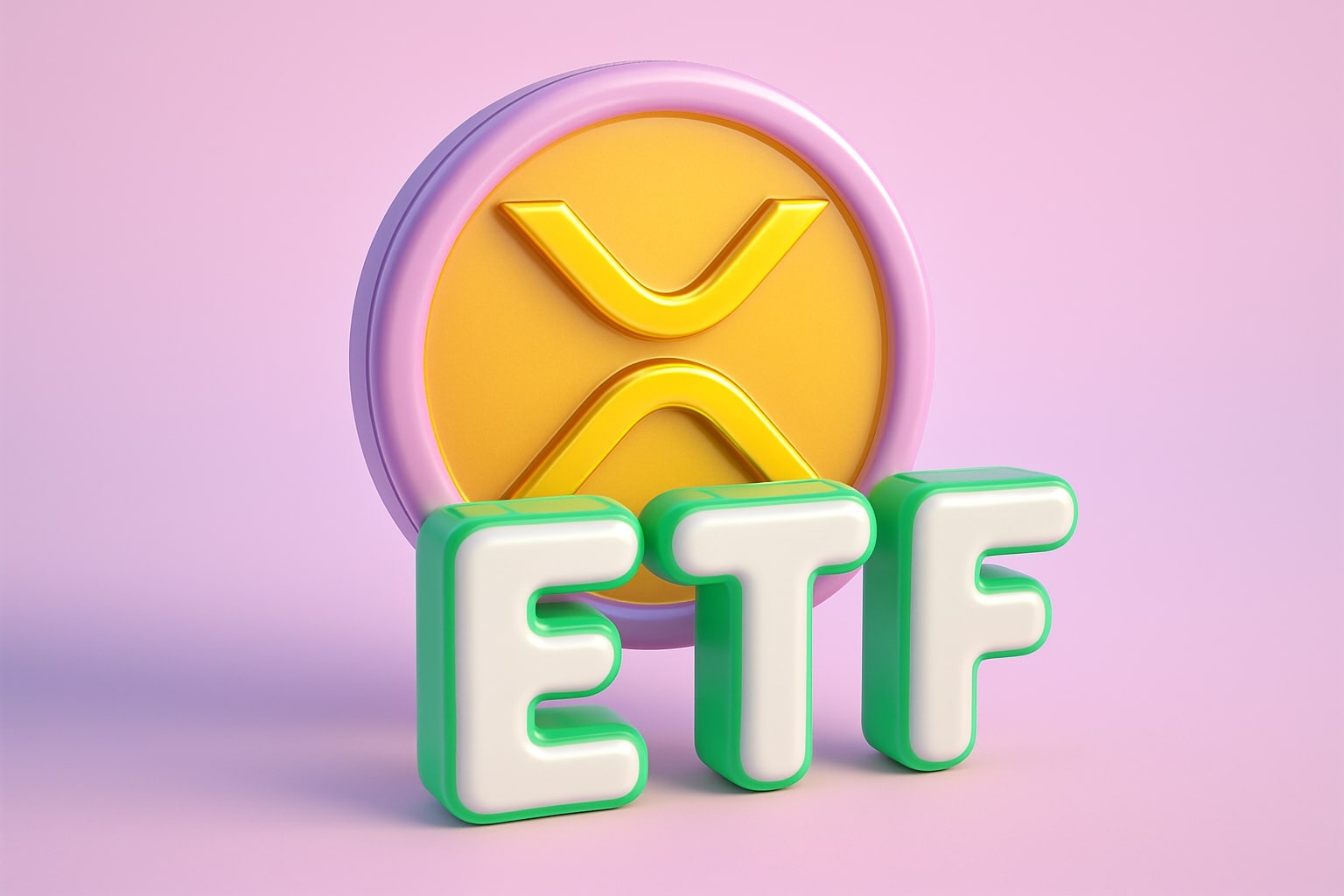
XRP Price Forecast - XRP-USD Tests $2.00 as XRP ETF Boom Fails to Halt 11% Weekly Drop
Despite record ETF inflows of $293M, Ripple (XRP-USD) remains under pressure, with a Death Cross pattern, falling open interest to $3.79B, and RSI at 37 signaling bearish momentum. Analysts warn that a break below $2.00 could trigger a slide to $1.55 | That's TradingNEWS
Ripple (XRP-USD) Faces Heavy Selling as $2 Support Wobbles Amid ETF Euphoria and Bearish Momentum
Ripple (XRP-USD) trades at $2.00, down 3.06%, extending an 11% weekly loss as the market tests the limits of institutional demand following a surge in new XRP exchange-traded funds (ETFs). Despite record inflows exceeding $293 million across new funds from Bitwise, Franklin Templeton, Canary Capital, and 21Shares, XRP’s technical structure has weakened sharply, signaling the risk of a breakdown below the key $2.00–$1.55 support zone.
The price remains more than 40% below its July high of $3.65, with on-chain data showing long-term holders shifting from euphoria to anxiety. Net Unrealized Profit/Loss (NUPL) metrics have fallen below 0.5, confirming a psychological shift across the network. Traders are divided — some view this level as a final accumulation phase, while others see the risk of capitulation if support fails.
Institutional ETF Launches Ignite Demand but Fail to Lift Price
Institutional activity around Ripple (XRP-USD) has accelerated dramatically. Bitwise’s XRP ETF officially launched this week on the NYSE, joining Franklin Templeton’s EZRP (listed November 18) and Canary Capital’s XRPC, which drew $250 million in inflows on its first day and now totals $292 million in assets. Combined, XRP ETFs have attracted roughly $293 million in net inflows since late October, marking the largest altcoin ETF debut of 2025.
However, these inflows have not yet translated into price appreciation. Analysts from ShoreLabs and NOBI suggest macro liquidity conditions and Bitcoin dominance, not ETF headlines, are dictating market direction. Despite the $16 million daily inflows recorded this week, the derivative market remains muted — open interest stands near $3.79 billion, down from $3.85 billion the day before, signaling weak speculative engagement.
ETF approvals, though a long-term confidence signal, have so far acted as liquidity traps rather than catalysts. Institutional allocators have opened small positions without converting them into lasting exposure. This divergence between ETF optimism and price stagnation highlights a fragile equilibrium — capital is flowing in, but conviction remains thin.
Ripple’s Corporate Expansion and Strategic Alliances Strengthen Fundamentals
While price action looks weak, Ripple Labs Inc. continues to execute aggressive expansion strategies. On November 5, the company closed a $500 million funding round, tripling its private valuation to $40 billion. Investors included Citadel Securities, Fortress Investment Group, Pantera Capital, Brevan Howard, and Marshall Wace — confirming deep institutional confidence in Ripple’s enterprise infrastructure.
Simultaneously, Ripple announced a strategic partnership with Mastercard and Gemini to integrate stablecoin payments into credit card transactions using RippleNet. This development positions XRP as a transaction layer within mainstream financial networks rather than a speculative token.
The company also expanded its treasury management operations, enabling partner banks to settle network fees using XRP holdings, a move expected to enhance token velocity and real-world utility. Yet, these corporate wins have failed to offset near-term bearish sentiment — highlighting how macro pressure and speculative fatigue can overshadow fundamental growth.
Technical Structure Signals Extended Bearish Phase
XRP’s price chart shows a decisive descending triangle, with lower highs compressing toward the $1.55 support line. This pattern, combined with weakening momentum, suggests sellers retain control. The 50-day EMA ($2.45) remains below the 200-day EMA ($2.54), forming a Death Cross, while the MACD histogram continues to widen in negative territory.
Momentum indicators confirm the weakness — the Relative Strength Index (RSI) sits at 37, signaling persistent seller dominance. A clear breakout above $2.45 would be required to neutralize bearish bias, while failure to hold $2.00 risks a fast decline toward $1.75 – $1.55.
Trading volume analysis supports the bearish outlook: recent sell-offs have occurred on rising volume, suggesting forced liquidation and investor exit rather than healthy consolidation. Short-term liquidity clusters concentrate between $1.90 and $2.10, meaning a decisive breakdown could accelerate rapidly once stop-orders trigger below $1.95.
Whale Positioning and Liquidity Pressure
On-chain whale data shows a significant shift in accumulation behavior. Over 583 million XRP left exchange wallets in early November, but inflows resumed after prices dipped below $2.10, signaling that large holders are buying dips cautiously, not aggressively.
Analyst FeFe highlighted a liquidity imbalance: only $3 billion XRP sits on exchanges versus an estimated $10 billion demand potential if all ETF issuers fully fund their allocations. This imbalance creates the theoretical conditions for a liquidity squeeze, where ETF administrators must buy XRP at progressively higher prices. Under a fully subscribed scenario, FeFe projects XRP could reach as high as $47, assuming institutional buyers absorb supply faster than circulating liquidity replenishes.
However, this projection depends on near-perfect demand dynamics. With derivatives OI declining and macro conditions tightening, such a move remains theoretical rather than imminent. Still, the math underscores how ETF mechanics could amplify volatility once large-scale accumulation begins.
Psychological Transition and NUPL Breakdown
Data from Glassnode confirms a notable deterioration in investor psychology. The NUPL ratio, which tracks net unrealized profits relative to total capitalization, fell below 0.5, marking a transition from optimism to anxiety. Historically, such moves precede either panic capitulations or smart-money accumulation.
This pattern mirrors prior market cycles — in 2020 and 2022, similar drops in NUPL preceded multi-month consolidations followed by steep rallies. The timing, however, depends on whether whales interpret the current phase as an opportunity to accumulate or a signal of structural weakness.
With XRP’s daily active addresses down 9% month-over-month and transaction count stagnating near 1.7 million, network activity remains subdued. The combination of weak volume, psychological fatigue, and ETF-driven divergence has created an unstable equilibrium — the token is neither capitulating nor recovering.
On-Chain Liquidity and Exchange Supply Compression
Exchange reserves of XRP continue to tighten, falling to 3 billion tokens, the lowest in 20 months. This represents less than 0.6% of total supply, emphasizing constrained market float. Over-the-counter liquidity remains minimal, under 500 million XRP, which limits institutional scalability.
This structural scarcity sets the stage for future dislocations. Should ETF inflows surpass $5–10 billion, market makers would need to source XRP across illiquid venues, rapidly escalating prices. The OTC shortfall thus becomes a key bullish risk, even as short-term charts show weakness.
In effect, XRP’s market architecture resembles an inverted spring — compressed in liquidity but fragile in confidence. If sentiment flips, moves could accelerate violently upward, as seen in July’s 75% rally to $3.65.
Read More
-
Meta Stock Price Forecast - Meta Faces $16B Tax Blow and $100B CapEx Shock as Shares Sink to $587
20.11.2025 · TradingNEWS ArchiveStocks
-
Ethereum Price Forecast - ETH-USD Stalls Near $3,013 as 2.69M ETH Supply Cluster Blocks Breakout Above $3,170
20.11.2025 · TradingNEWS ArchiveCrypto
-
Oil Price Forecast - Oil Prices Recover as U.S. Draw Depletes 3.4M Barrels
20.11.2025 · TradingNEWS ArchiveCommodities
-
Stock Market Today: NVDA +5%, WMT +6%, TSLA +5% Drive Nasdaq to 23,045 in Explosive AI-Led Rally
20.11.2025 · TradingNEWS ArchiveMarkets
-
GBP/USD Price Forecast - Pound Slides Toward 1.3050 as Hawkish Fed and Weak UK CPI
20.11.2025 · TradingNEWS ArchiveForex
Volatility and ETF Whiplash: Why XRP Surges Then Crashes
Recent trading behavior reveals a recurring “ETF whiplash” cycle. Each major ETF filing or approval triggers a short-term spike, followed by rapid profit-taking. In November alone, XRP surged 11% on ETF filings before retracing the entire move within 72 hours.
This pattern reflects institutional hedging — professional traders front-run ETF news, then rotate profits into Bitcoin (BTC-USD) and Ethereum (ETH-USD). As of now, XRP’s 7-day correlation with Bitcoin sits at 0.81, its highest in 2025, indicating that broader market weakness exerts outsized influence on Ripple’s price.
Until this correlation declines, XRP’s direction will remain largely dictated by macro crypto liquidity rather than XRP-specific fundamentals.
Technical Scenarios: $2 Pivot Defines the Next Move
XRP trades within a narrowing consolidation channel.
-
If $2.00 holds, a relief rally toward $2.26–$2.45 could follow, aligned with the RSI trendline.
-
If $2.00 breaks, the next critical Fibonacci support lies at $1.65, where Wave 2 corrections typically terminate.
-
Above $2.72, the short-term structure would flip bullish, signaling the start of a potential new wave 3 toward $3.00–$3.20.
At present, probabilities lean bearish: volume trends, EMA orientation, and momentum indicators align against bulls. But market depth analysis shows buy walls forming at $1.88–$1.93, suggesting institutional defense zones near these levels.
Market Sentiment and Regional Divergence
Regional flows reveal contrasting behavior. South Korean exchanges, particularly Upbit, have seen renewed XRP inflows from retail traders following localized hype and government approval of Ripple-based settlement networks. By contrast, U.S. derivative exchanges like Binance.US and Coinbase show net outflows, consistent with declining speculative leverage.
This geographic divergence has stabilized global volumes — daily turnover averages $2.6 billion, down from $4.8 billion in October. The Asian retail push offers short-term liquidity but not necessarily long-term conviction.
Macro Correlations and Cross-Asset Pressure
Ripple’s underperformance coincides with broad weakness in Bitcoin (BTC – USD $87,775, -4.03%) and Ethereum (ETH – USD $2,824, -3.11%). As capital rotates defensively, XRP’s high beta amplifies losses. Dollar strength, measured by the DXY above 100.7, has also pressured altcoins. Unless global risk appetite improves, XRP may struggle to sustain rallies above $2.20.
Short-Term Outlook: Consolidation or Capitulation?
XRP remains balanced on a psychological knife-edge. Institutional ETFs have established a foundation of legitimacy, but price behavior reflects uncertainty. The $2.00 level now defines sentiment — a decisive bounce could attract sidelined buyers, while a confirmed breakdown below $1.90 risks accelerating liquidation toward $1.55.
Technical oscillators suggest a potential oversold condition, with RSI divergence and narrowing MACD spread. However, traders should monitor ETF flow continuity; if daily inflows fall below $5 million, short-term price recovery may stall.
Verdict: Ripple (XRP-USD) — HOLD with Downside Bias
Despite robust fundamentals — growing institutional integration, record ETF inflows, and a shrinking circulating supply — Ripple (XRP-USD) faces near-term technical and psychological pressure. The breakdown risk below $2.00 outweighs immediate upside potential, but the long-term structure remains constructive if liquidity stabilizes.
The base case is a Hold, with downside bias toward $1.75–$1.55, followed by medium-term recovery potential back to $2.60–$3.00 once ETF demand normalizes and sentiment resets.



















